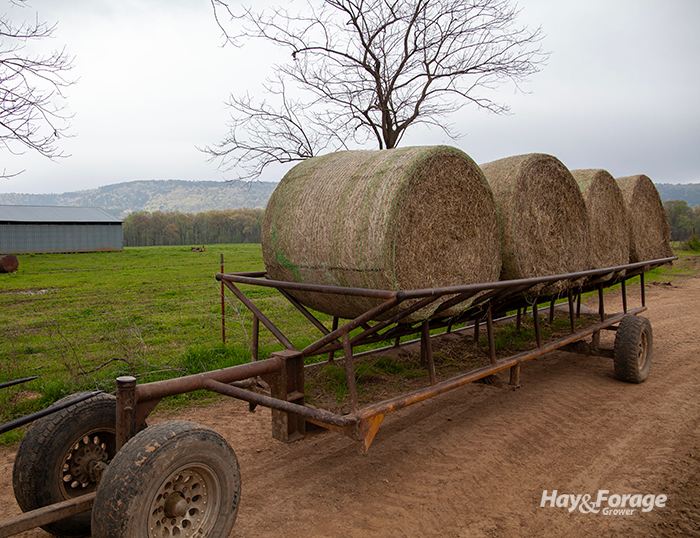Bale weight, intake matter for hay feeding |
| By Amber Friedrichsen, Managing Editor |
|
|
 As the grazing season shifts to a period of hay feeding, it is time to take inventory of current forage supplies and map out a budget for buying feed. Crunching some numbers and thinking ahead can help make ballpark estimates for purchasing bales more precise. In a recent issue of the Cow-Calf Corner newsletter from Oklahoma State University Extension, Mark Johnson explains the following steps to gauge forage needs for the upcoming hay-feeding season. 1. Determine average mature cow size. Johnson, a beef cattle breeding specialist, recommends weighing 4- to 7-year-old cows to find the herd’s average weight. From there, consider the amount of forage dry matter each cow will eat every day. To demonstrate how forage consumption varies by animal size, Johnson states a 1,000-pound cow can eat roughly 26 pounds of dry matter per day, whereas a 1,400-pound cow could consume up to 36 pounds of dry matter per day. 2. Determine cow inventory. In other words, count your cows. Then, calculate the total amount of hay needed based on average animal weight and herd size. From the example above, a herd of 100 cows that each weigh an average of 1,400 pounds would require a total of 3,600 pounds of forage dry matter per day. However, Johnson notes some percentage of fed hay will inevitably go to waste. He suggests upping the total estimate by 10%, which would be 4,000 pounds of forage dry matter per day, with feeding losses included. “Remember, the amount of hay wasted or spoiled could be higher,” Johnson writes. “If we are feeding hay from last year, expect a higher spoiled percentage in each bale.” 3. Estimate hay feeding days. With an approximate daily requirement established, consider how many days you expect to feed hay. Johnson says feeding hay from mid-October through mid-May will equal roughly 200 days. To extrapolate on the example scenario, he multiplies that by the daily hay requirement to get 800,000 pounds, or 400 tons, of forage dry matter for the entire hay-feeding season. 4. Divide by bale weight. Take the total dry matter volume needed divided by average bale weight to determine the number of bales necessary to feed the herd. For instance, it would take 640 round bales that weigh roughly 1,250 pounds on a dry matter basis to feed the cows in Johnson’s example. “If possible, purchase hay by the ton,” he asserts. “It leads to less error in securing the amount of hay you will need to purchase or have on inventory. If buying hay by the bale is your only option, make sure to weigh enough of the bales to have an accurate representation of bale weight.” Moreover, spoilage can vary from bale to bale. Although Johnson notes the dry growing season and current drought conditions in his state of Oklahoma may help reduce spoilage in baled forage, this may not be the case in every region. Johnson also points out that gestating and lactating cows will have different nutritional requirements than the dry cows in the example above. For this reason, additional hay and other supplementation may be necessary to make it through the winter. |
